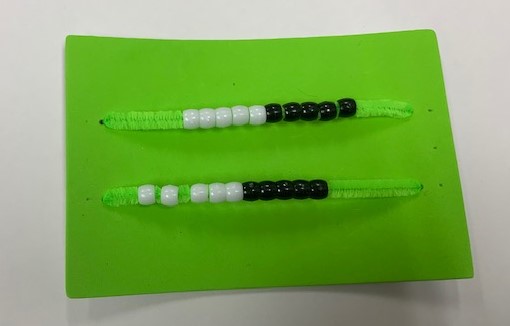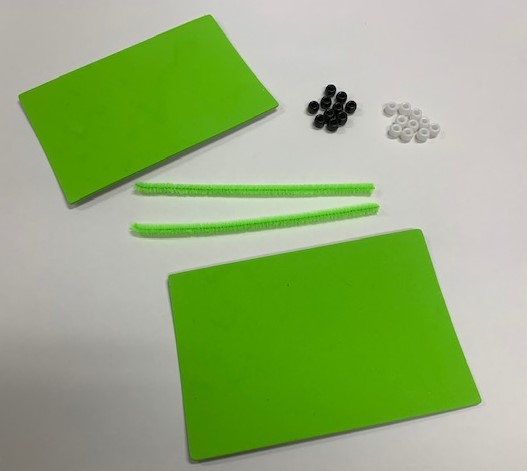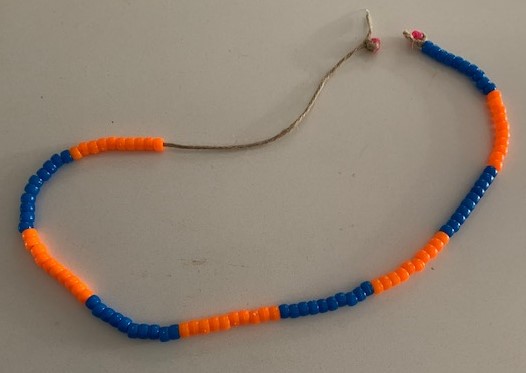
In the last week I have been going into classes and making manipulatives with beads. Beads are a great resource and can be used in so many ways.
Renenrek
In Foundation classes (5 year-olds) we made Rekenreks. These are like mini-abacuses with two rows of 10 beads, in two groups of five. They can be used with students who are beginning to learn to count and develop one-to-one correspondence. You can also do some great activities on partitioning.
To make these we used the following materials:
- Sticky-backed, coloured foam sheets
- Coloured pipe cleaners
- Black and white pony beads ( Traditionally red and white beads are used, but I could not find red ones.)
We chose foam sheets and pipe cleaners in matching colours so that the beads would stand out clearly. In the example above both are green. We had a variety of colours and let the students choose which they wanted – that way those that have difficulty distinguishing colours could choose the ones that worked best for them.

The students were asked to first count out two groups of five beads in each colour, then to thread them on to the pipe cleaners – great for fine motor skills. After they were checked by a teacher the pipe cleaners were threaded into one of the foam sheets so that they had room to move. The backing was removed, the pipe cleaner stuck to the back and the second sheet then stuck to that. This made the rekenreks secure.
The students were really excited to make and then use these. We worked on showing numbers in different ways, using one or two of the rows and looking for patterns. The teachers were also excited by these and are looking forward to integrating them into their teaching.
The pipe cleaners mean that the beads do not move by themselves, the students have to push them along. This adds a kinaesthetic (tactile) dimension to the activity.
Bead Strings
In Year 1 and Year 2 (6 and 7 year-olds respectively) we made more traditional bead strings.
In Year 1 we made a string with 30 beads in two colours, in groups of 5

In the example above I used beads of a different colour at the ends to stop the beads falling off. When we did this in class I had clear beads and used these instead.
In Year 3 we made strings of 100 beads in two colours in groups of 10.

Some people make the strings into bracelets or necklaces but I like to leave them untied so they can be laid flat on a desk. Some students find them easier to use like that.
With each string we looked at:
- counting in groups
- which size groups left no spare beads at the end
- what patterns they saw when counting
- folding the strings
- using the bead string as a number line
References
https://calculate.org.au/2018/12/10/bead-strings/https://www.mathlearningcenter.org/sites/default/files/pdfs/LTM_Rekenrek.pdf


